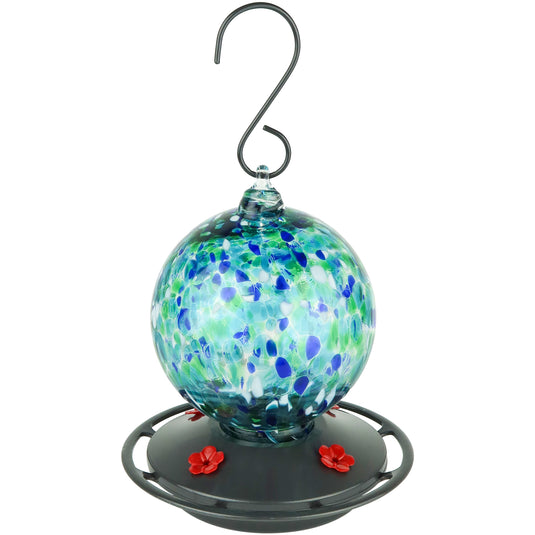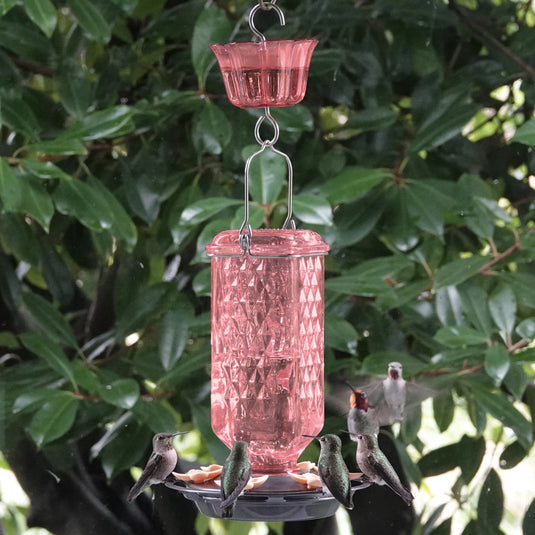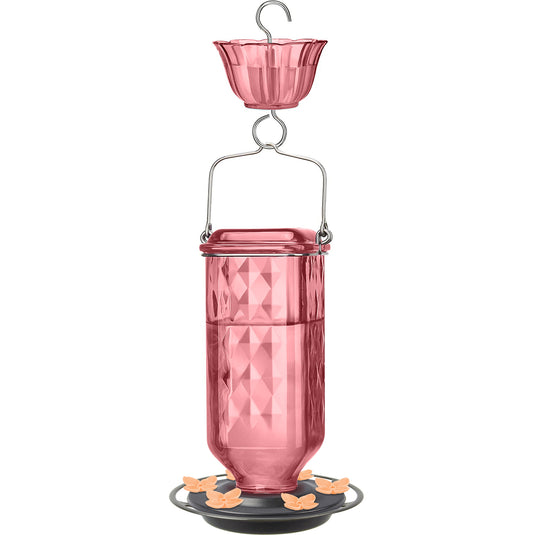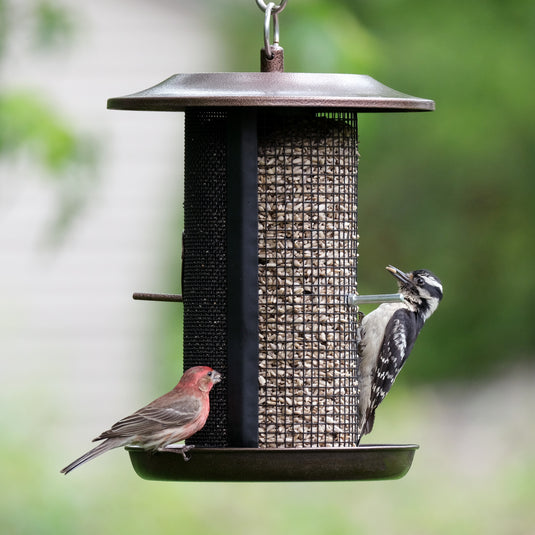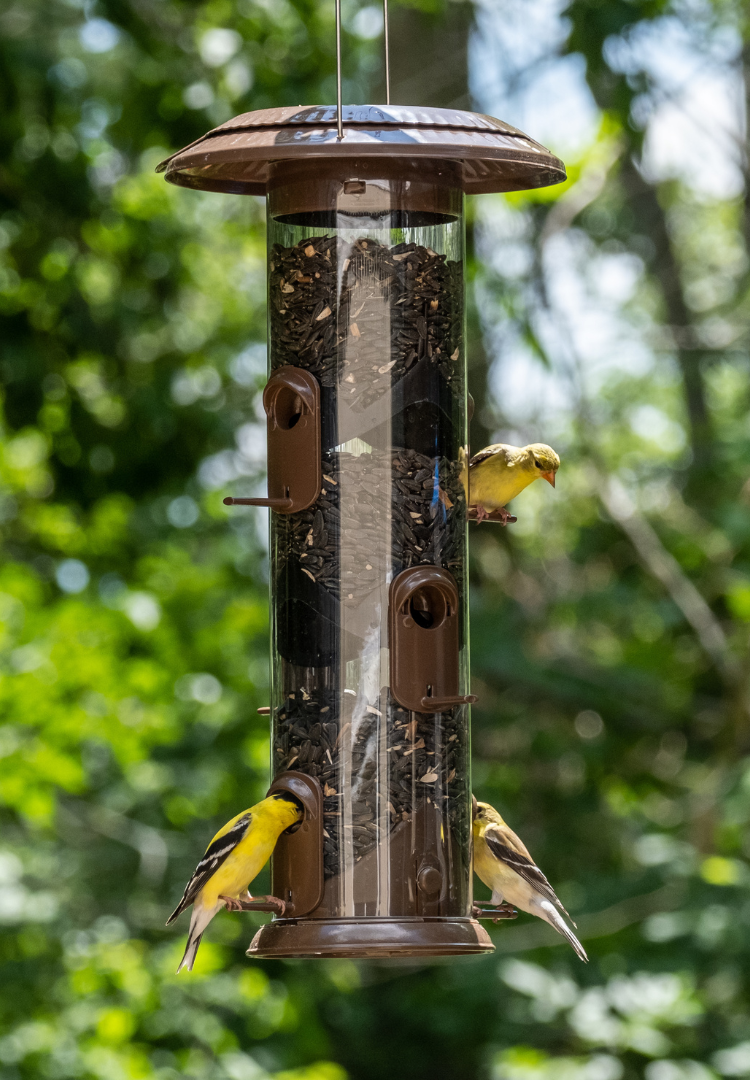Identifying House Wrens:
House Wrens are very small songbirds with rather drab brown coloring, but what vibrancy they may lack in appearance they make up for in the beauty of their song. A small and compact bird with an overall length ranging from 4.3-5.1 inches, House Wrens have a flat head and fairly long, curved beak. Darker brown barring covers short wings and long tail. These birds often can be seen in a rather tell-tale stance keeping their longish tails cocked above the line of the body. In summer months, House Wrens are common in forest edges and open forests or areas with scattered grass and trees. Backyards, farmyards, and even some city parks are perfect habitats.
While these small birds may be fairly dull in appearance, it is their beautiful song which enamors many bird enthusiasts. Males often sing 9-11 times per minute when attempting to attract a mate. Songs are long, shuffled bubbling introduced by abrupt churrs and scolds. They are made up of 12-16 recognizable syllables. Listen to the beautiful song here.
Attracting House Wrens:
House Wrens feed mainly on insects like caterpillars, crickets, beetles, spiders, grasshoppers, and worms. They will visit feeders more infrequently when the weather is mild and these food sources are abundant. Since they rely mainly on these natural food sources, it is always recommended to limit or completely avoid the use of pesticides. Wrens can often be attracted to feeders with meal worms or suet. In addition, making sure to include native shrubs and trees in your landscaping can help to attract these birds by providing them with the cover they prefer.
Erecting a traditional hanging wren house, box wren house, or even a traditional bluebird house can also help to entice house wrens to your property.
Nesting:
Cavity nesters, House Wrens are not overly picking regarding location for their nests. From old woodpecker holes, natural crevices, artificial nest boxes, or even discarded shoes or tins unintentionally provided by humans House Wrens are fierce competitors for chosen nest sites, sometimes even evicting a larger species and claiming its cavity. The seemingly only requirement these birds hold firm to is that the nest sit be located within 100 feet from woody vegetation.
After selecting a nest site, a male House Wren while pile twigs into the cavities of several nest site options. These twigs fill the entire cavity and mound up into a barrier between nest and entrance, seemingly to protect the nest from cold weather, predators, or potentially even other birds that may attempt to disturb the nest. The male will then flutter from branch to branch in a tree or shrub nearby the next sites, singing loudly in attempts to attract a female. The female will inspect the sites and may choose whichever one is to her liking. Once a site has passed her approval, the nest cup itself is built into a depression in the twigs and lined with just a very small amount of feathers, grass, plant material, or animal hair.
Clutch sizes vary from 3 to 10 eggs that are roughly 0.6-0.8 inches in length and 0.5 inches in width and a light white, pink, or gray in color with reddish brown speckling. Eggs are incubated between 9 and 16 days and hatchlings will leave the nest in roughly two weeks after both parents take part in providing food and cleaning the nest to raise the young together.
Leave a comment to share with us your House Wren stories!









